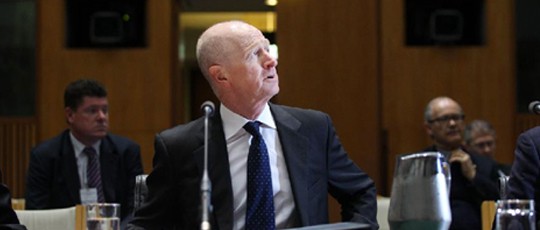There is no doubt the residential property market is red hot. The latest data from the ABS, RBA and RP Data indicates that low interest rates, expanded bank lending and keen interest from investors has pushed value skywards. The question is how long this will last and what consequences will emerge when it ends.
Value, value, value
The graph below indicates the increasing value of Australian dwellling stock since 2011 and the changes in the Australian cash rate. Unsurprisingly total dwelling value has increased as the cash rate has fallen.
Total Value of Australian Dwelling Stock ($T) and cash rate (%)

This consequence of low interest rates is not isolated to Australia. The graph below shows the extent of housing price growth in Australia in comparison with other major economies. While the last 12 months shows the US outpacing Australia by 2.6%, over the longer term Australian price growth has been one of the best performers.

Broken down by capital city it is evident that price growth has been driven by Sydney followed by Melbourne and Perth. Melbourne recorded the strongest growth over the last three months with prices soaring by 5.4%. Sydney grew by 4.4% while Hobart strengthened by 4.7%. This is on the back of sizeable increases over the year, shown below.

These price increases have raised the mean average for Australian property by 8.6% over the year. Broken down by state, NSW is most expensive at $633,200, followed by ACT($568,300) and VIC ($542,000). Tasmania remains the bargain state with a mean value of $307,600.
Mean value of residential property by Australian States ($ ‘000)

The concern for some commentators is that while property prices are rocketing, salary increases over the year from December 2012-2013 scrapped in at 2.5% and 0.6% over the December quarter. Raising the question of how these price hikes are being driven.
Getting the money out
The latest data on bank lending indicates a 6.5% year-on-year increase in lending to owner-occupiers and 9.4% increase to investors. As the graph below shows, this remains around levels immediately before the GFC commenced in 2008.
Year-on-year percentage change in bank lending

Looking at this growth in absolute terms provides a clearer understanding of the size of lending. The graph below shows an upward trend of total bank lending to household and investors as well as total dwelling value. For February 2014 bank loans to owner occupier totaled $817.9 billion while loans to investors increased to $413.5 billion. This is more than double 2007 levels and reflects the increasing value of housing stock from 2012.
Total bank lending to households and investors and total dwelling value ($B)
Unsurprisingly, total housing loan approvals have increased over 2013. It is no secret that the majority of this increase has come from investors and repeat-buyer owner-occupiers. First home buyers are barely present in the market. The latest data indicates that they represented only 13.2%, above November 2013 record low of 12.3%.

The function of demand and supply
Increasing value of Australian dwelling Stock and increasing bank loans indicates one thing for certain: expansionary monetary policy is having an effect on the housing market. Interestingly broad consumer sentiment does not reflect the enthusiasm in the property market, as shown in the graph below.

Another interesting point is that demand in the property market appears to be unmoved by the size of household debt. As the graph below shows household debt as a percentage of household disposable income was already sitting at 150% in 2013, while interest paid as a percentage of household disposable income has decreased to about 9%.

With so many investors in the market it is important to consider the potential for realization of profits. RP Data shows that over the final quarter of 2013 there were 74 595 properties re-sold in the Australian housing market. Interestingly, of this total, 9.7% were recorded as a gross loss (worth $457.3 million). As the graph below indicates this percentage is high compared to the last 10 years, although a downward trajectory has been present since 2012.

Importantly this high proportion of properties sold at a loss has not been the case across the board. Lifestyle regions were the greatest loss making areas, particularly in unit markets. Far North Queensland recorded the largest proportion of loss making re-sales with 28.8% in December 2013. The lowest proportion of loss making was unsurprisingly in Sydney (3.6%), Perth (4.3%), Melbourne (6.0%) and Canberra (7.4%). Showing clearly that where you buy matters.
RP Data suggests that there is another explanation for loss making and it simply has to do with timing; the important point being 2008. Those properties bought after 2008 are much more susceptible to loss, while those bought before have a greater probability of profit.
Conclusion
Low interest rates and huge levels of bank lending have pushed the value of total dwelling stock in Australia to historic levels. This has raised some eyebrows, including those of RBA Governor Glen Stevens even though this jump in prices was expected. If nothing else, this keenly exposes the tension between the RBA’s dual mandate of monetary policy and financial stability. We will see more of this tension as the RBA attempts to coax the economy through the post-mining investment boom.




